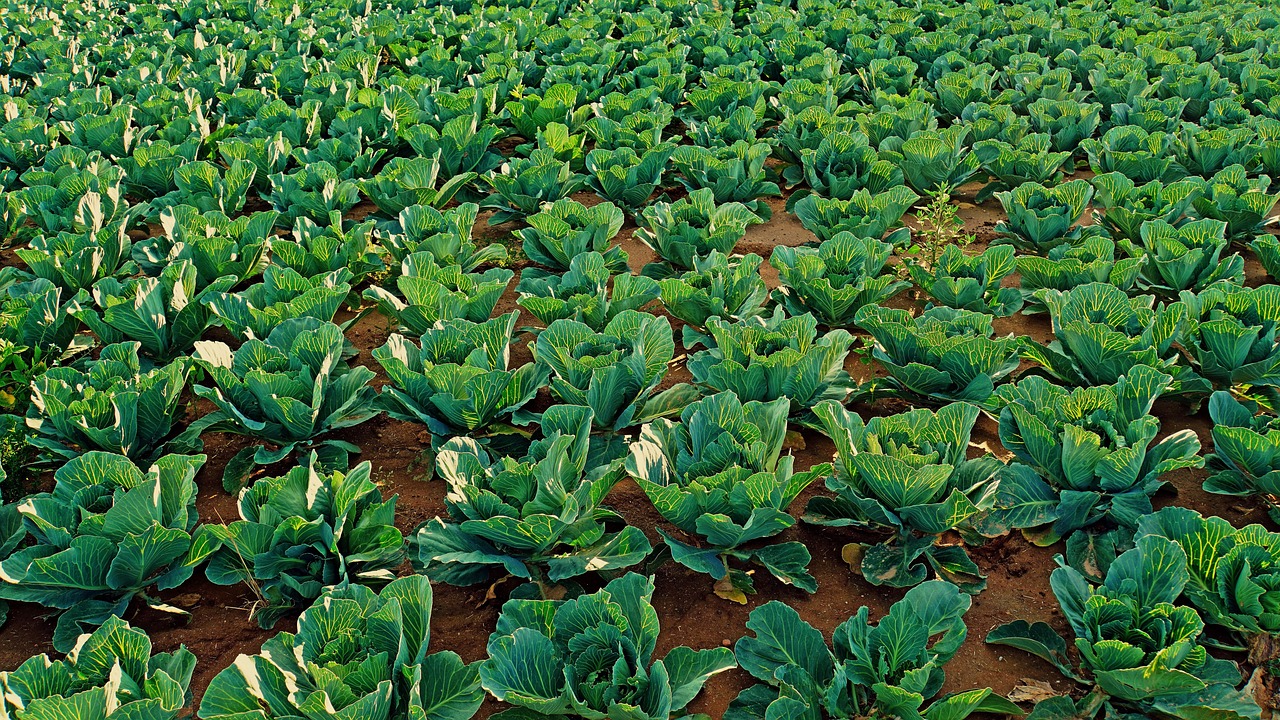Cabbage
Cabbage, a cool-season vegetable, thrives in sunny spots with fertile, well-drained soil. Before planting cabbage seedlings, mix organic matter and a complete fertilizer into the soil. Plant seeds ¼-½ inch deep, 2-3 weeks before spring’s last frost. Space seedlings or transplants 12-18 inches apart in rows 2-3 feet apart. Fertilization during head formation can lead to excessive leaf growth and head splitting. Water deeply but infrequently. Using plastic or organic mulches can conserve water and control weeds. Regularly monitor for pests and diseases. Harvest when heads are full-sized but not split.
Soil Types
Cabbage grows best in fertile, well-drained soil rich in organic matter. Most Utah soils are suitable for cabbage cultivation.

Preparing the Soil
Conduct a soil test before planting to determine fertilizer needs. Follow the recommendations in the test report. If necessary, incorporate the fertilizer into the top 6 inches of soil. If using compost as a fertilizer, apply no more than 1 inch per 100 square feet of garden area.
Plant Selection
Cabbage can be grown from seeds or transplants. Plant seeds ¼-½ inch deep and thin to the final stand when plants have 3-4 true leaves. Removed plants can be transplanted elsewhere. Transplants provide an earlier harvest and should have 4-6 mature leaves and a well-developed root system.

Planting and Spacing
Plant seeded or transplanted cabbage 12-18 inches apart in rows 2-3 feet apart. Cabbage grows best in temperatures below 80°F and can withstand temperatures down to 25°F. Plant transplants 2-3 weeks before the last frost-free date. Plant early maturing cultivars 50-75 days before the expected maturity date for fall harvest.
Watering
Water cabbage deeply and infrequently, maintaining even soil moisture. About 1-2 inches of water per week is required. Use drip irrigation if possible. Mulching helps conserve soil moisture and control weeds. Moisture fluctuations during heading can cause heads to split.
Fertilizing
Four weeks after transplanting or thinning, apply ½ cup of nitrogen-based fertilizer (21-0-0) per 10 feet of row. Avoid additional nitrogen after heads form as it can cause loose heads and splitting.
Mulches and Row Covers
Plastic mulches conserve water, control weeds, and allow for earlier planting and maturity. Hot caps and fabric covers protect seedlings and transplants from frost. Fabric covers also protect young plants from pests. Apply organic mulches when temperatures exceed 80°F.
Harvesting and Storing Cabbage
Harvest cabbage when heads are full-sized, firm, and compact. Cut the stem below the head, leaving 2-3 wrapper leaves for protection. Store cabbage at 32°F and 95% relative humidity for 2-6 months. Avoid storing cabbage with ethylene-producing fruits like apples and pears to prevent bitter flavors.


